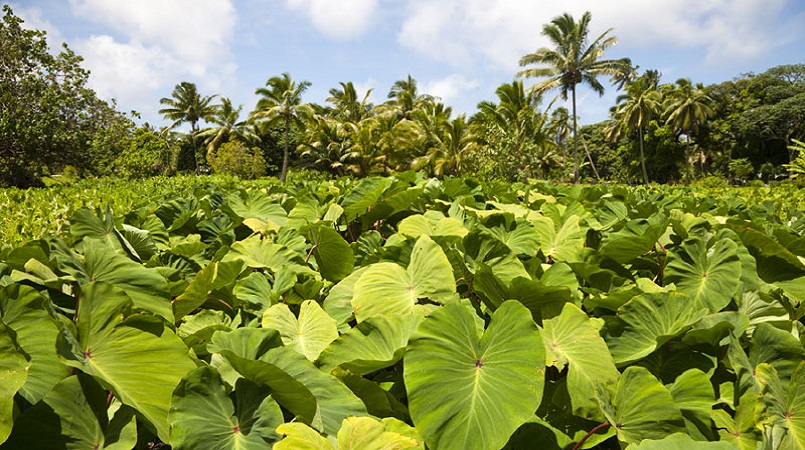
Twenty-eight samples of taro from a breeding programme in Cook Islands have been taken to Samoa for testing against the Taro Leaf Blight disease.
Director of Research and Development Division William Wigmore said that it was in August 2015 that he took the samples to Samoa.
“These materials were provided to the Samoan Ministry of Agriculture for testing against the blight under quarantine protocols and we are still awaiting results,” Wigmore said.
He said they are hoping to get some promising information on the performance of the samples against the leaf blight disease.
Wigmore said only one species of common taro with the botanical name Colocasia esculenta was taken.
“Prior to the Taro Leaf Blight disease (TLB) Phytophthora colocasiae arriving in Samoa in 1993, the country had a lucrative export industry of fresh taro worth about NZ$12 million (US$7.9 million) annually to the NZ markets,” Wigmore said.
In response to the taro leaf blight disease, Wigmore said a breeding programme was initiated to find resistant or tolerant cultivars to fight the disease.
“A spraying programme using fungicides was also initiated soon after the disease was confirmed in Samoa but this was expensive and not feasible.
“Some of the TLB materials from the Samoa programme are maintained at the SPC-LRD Centre for Pacific Crops and Trees (CePaCT) and can be accessed by countries of the Pacific and globally for food security and breeding purposes”.
He said the disease is still in Samoa and hence the initiation of the Taro Improvement or Breeding Programme in Cook Islands, Fiji, and Tonga are to prepare them in the event the disease could arrive in the country.
“TLB tolerant materials from the Samoa breeding programme were selected for cross-breeding with our local cultivars”.
Wigmore said the disease affecting Samoa’s taro came as a wake-up for our region such that after the Taro disease in Samoa there was a strong push in the Pacific with support from various organisations to conserve plant genetic resources in the region.
“At the present time, the SPC-LRD CePaCT holds the largest collection of Taro in the world with more than 1000 accessions from around the Pacific and other parts of the world,” he said.
Wigmore added that the materials can be accessed by countries for food security and breeding purposes and CePaCT also holds many varieties and species of other important food crops for the pacific including sweet potato, yams, breadfruit, and cassava
